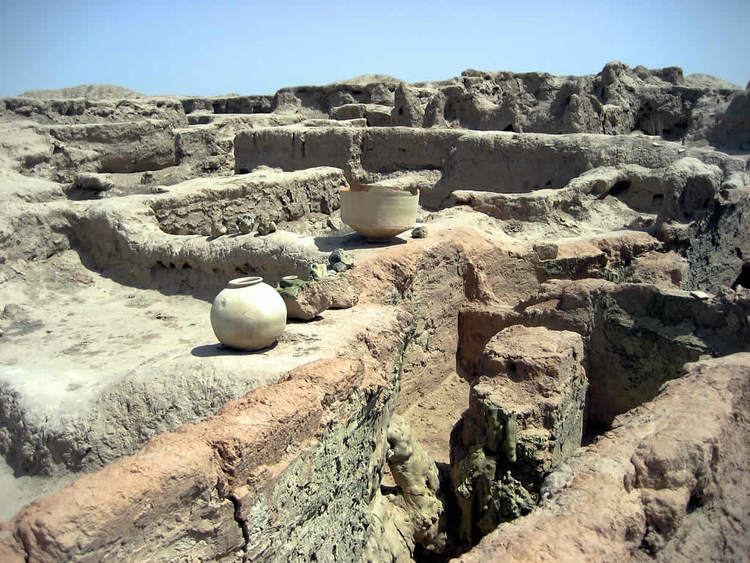Address Turkmenistan | ||
 | ||
Similar Altyndepe, Namazga‑Tepe, Nisa - Turkmenistan, Kopet Dag, Tomb of Ahmed Sanjar | ||
Turkmenistan gonur tepe
Gonur Tepe is an archaeological site of about 55 hectares in Turkmenistan that was inhabited by Indo-Iranian peoples until sometime in the 2nd millennium BCE dating back to 2500 BCE. It is located about 60 km north of Mary, Turkmenistan (the capital city of Mary Province).
Contents
The site was discovered by Greek-Russian archaeologist Viktor Sarianidi. Sarianidi discovered a palace, a fortified mud-brick enclosure, and temples with fire altars which he believes were dedicated to the Zoroastrian religion. He also found what appears to be the boiler for the ritual drink soma, which is mentioned in the Rigveda and also in the Avesta as haoma. Sarianidi says he also found dishes with traces of cannabis, poppy and ephedrine. According to Sarianidi, this discovery strengthens the theory that these were the ingredients of soma.
The northern part of the complex had a central citadel-like structure about 100 by 180 m (330 by 590 ft) in size. A southern complex is about 1.5 hectares in size. The site was most likely abandoned after the course of the Murghab River shifted to the west. Gonur is among the largest ruins in the Morghab delta region; over 150 ancient settlements dating to the early Bronze Age (2500-1700 BCE) have been found there.
